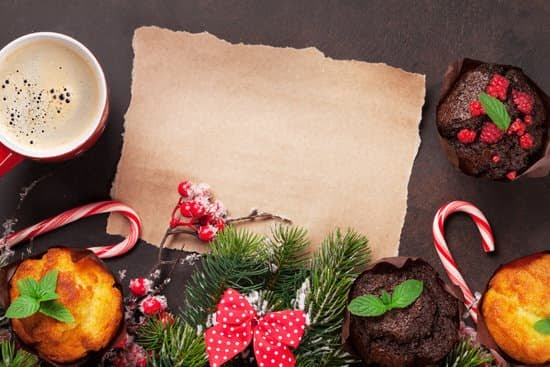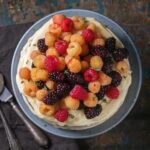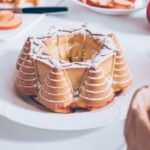Layered cakes are a popular and indulgent choice for celebrations, offering a visually stunning and delicious centerpiece for any special occasion. In this article, we will explore the art of decorating a layered cake, covering everything from selecting the perfect flavor combinations to applying the final decorative touches. Whether you’re a beginner looking to improve your cake decorating skills or an experienced baker seeking new ideas, we’ve got you covered with step-by-step instructions and helpful tips.
Layered cakes consist of multiple tiers stacked on top of each other, often filled with delectable frosting or filling. These cakes hold great significance in celebrations such as birthdays, weddings, and anniversaries, making them a symbol of joy and festivity. The decoration plays a vital role in enhancing the appeal of a layered cake, turning it into a work of edible art that captures the theme and spirit of the occasion.
With our guide, you will gain valuable insights into selecting the right flavors and fillings to create mouthwatering combinations that complement each other perfectly. You will also learn crucial techniques for preparing and assembling your cake layers like a pro. So get ready to unleash your creativity and dive into the delightful world of layered cake decoration.
Choosing the Right Cake Flavor and Filling
When it comes to decorating a layered cake, one of the most important decisions to make is choosing the right cake flavor and filling. The flavor of the cake sets the tone for the entire dessert, and the filling adds an extra layer of taste and texture. Here are some tips for selecting the perfect combination:
- Consider the occasion: Think about the event or celebration for which you are baking the layered cake. For example, a light and fruity flavor combination might be perfect for a summer birthday party, while a rich and decadent flavor pairing could be ideal for a winter holiday gathering.
- Complementary flavors: When choosing a cake flavor and filling, look for combinations that complement each other. For example, if you’re making a chocolate cake, consider pairing it with raspberry or mint filling for a burst of freshness. Similarly, a lemon cake can be beautifully complemented by a coconut or vanilla filling.
- Popular flavor combinations: Some classic flavor combinations never go out of style. For example, a moist vanilla cake pairs well with layers of fresh strawberries and whipped cream, while a rich red velvet cake can be perfectly complemented by layers of cream cheese frosting.
Once you’ve decided on the right cake flavor and filling combination for your layered cake, it’s time to move on to preparing and baking the cake layers. By selecting complementary flavors that suit your occasion and personal taste preferences, you’ll set yourself up for success when it comes to decorating your layered masterpiece.
Get ready to learn how to decorate a layered cake using any type of icing.
Preparing the Cake Layers
The key to a stunning layered cake lies in the preparation of the cake layers themselves. To start, it is essential to ensure that the cake layers are baked and cooled properly. Follow your chosen recipe carefully, making sure not to overmix the batter and to monitor the baking time closely.
Once the layers are baked, allow them to cool completely on a wire rack before attempting to handle them. This will prevent any crumbling or breakage that can occur when moving warm cake layers.
After your cake layers have cooled, it’s time to level and trim them for a professional-looking finish. This step is crucial as it ensures that each layer is even and will stack neatly without lopsidedness. To do this, use a long serrated knife or cake leveler to carefully remove any domed tops and create a flat surface for stacking. Take care during this step, as precision is key in creating a visually appealing layered cake.
Once your cake layers are leveled and trimmed, they are now ready for filling and stacking. These steps lay the foundation for a beautifully decorated layered cake, providing you with an even canvas upon which you can build your design.
| Preparing Cake Layers Steps | Details |
|---|---|
| Baking and Cooling | Ensure proper baking technique and thorough cooling on wire racks |
| Leveling and Trimming | Use serrated knife or cake leveler to create flat surfaces for stacking |
| Filling and Stacking | Create a firm foundation for cake decoration by ensuring even layers |
Crumb Coating the Cake
When it comes to creating a professional-looking layered cake, crumb coating is an essential step in the decorating process. The purpose of crumb coating is to seal in the crumbs and create a smooth surface for the final layer of frosting. Here are some instructions for applying a crumb coat evenly and smoothly:
1. Prepare your cake layers: Once your cake layers have cooled completely, level and trim them to ensure even and straight edges.
2. Apply a thin layer of frosting: Using an offset spatula, spread a thin layer of frosting over the entire surface of the cake. This initial layer will pick up any loose crumbs from the cake.
3. Chill the cake: Place the crumb-coated cake in the refrigerator for about 15-20 minutes to allow the frosting to set.
4. Apply the final layer of frosting: After chilling, apply a final layer of frosting over the crumb coat. This layer should be thicker and can be smoothed out for a clean finish.
By following these steps, you will achieve a well-prepared base for decorating your layered cake, ensuring that any final decorations will adhere smoothly without picking up unwanted crumbs.
Remember that patience and attention to detail are key when crumb coating a layered cake, as this step lays the foundation for a beautifully decorated final product.
- Prepare your cake layers
- Apply a thin layer of frosting
- Chill the cake
- Apply the final layer of frosting
Choosing the Right Frosting
When it comes to decorating a layered cake, choosing the right frosting is crucial in achieving the desired look and taste. There are several different types of frosting suitable for layer cakes, each with its own unique characteristics and flavors. The type of frosting you choose will depend on the decoration style you want to achieve, as well as personal preferences and dietary restrictions.
One popular option for layer cake frosting is buttercream, which offers a smooth and creamy texture that is easy to work with. Buttercream can be flavored and colored in endless ways, making it versatile for various decorative elements such as piping, rosettes, and other intricate designs. Another common choice is cream cheese frosting which has a tangy flavor that pairs well with certain cake flavors like red velvet or carrot cake.
For those who prefer a lighter and fluffier frosting option, whipped cream or whipped ganache are excellent choices. Whipped cream provides a delicate and airy texture, while whipped ganache offers a rich and indulgent flavor that complements chocolate or mocha-flavored cakes. Additionally, fondant can be used as a smooth canvas for more elaborate decorations and sculpted designs on layered cakes.
When selecting the best frosting for your layered cake decoration, consider the overall aesthetic you want to achieve as well as any flavor preferences or dietary restrictions. Experimenting with different types of frostings will allow you to discover which one works best for your specific cake decorating project. No matter which type of frosting you choose, remember that practice makes perfect when it comes to mastering the art of decorating a layered cake.
Creating Decorative Elements
Once you have your layered cake prepared and crumb-coated, it’s time to get creative with decorative elements. There are numerous ways to add flair to your cake, from simple designs to intricate patterns. One popular method is using different icing tips to create various shapes and textures on the cake’s surface. You can achieve this by piping rosettes, swirls, or even writing messages on the cake.
To start creating decorative elements for your layered cake, make sure you have a variety of icing tips on hand. Different tips will allow you to create different designs and textures. For example, a star-shaped tip is perfect for creating rosettes, while a round tip can be used for piping borders or writing. Practice using each tip on a piece of parchment paper before moving onto the cake to ensure you have good control over the icing flow.
Another way to add visual interest to your layered cake is by using edible embellishments such as sprinkles, edible flowers, or chocolate shavings. These garnishes not only add texture but also provide an opportunity for personalization based on the occasion or theme of the celebration. When adding these final touches, consider the overall color scheme and design of the cake to ensure that everything complements each other.
Once all decorative elements are in place, step back and evaluate the overall look and feel of the cake. Don’t be afraid to experiment with different techniques and combinations until you achieve a design that satisfies your creative vision.
| Decorative Element | Benefits |
|---|---|
| Icing Tips | Create various shapes and textures |
| Edible Embellishments | Add texture and personalization |
Assembling and Stacking the Layers
Once you have prepared your cake layers, it’s time to assemble and stack them to create the impressive layered cake. This step is crucial as it sets the foundation for the final decoration and presentation of the cake. Here are some detailed instructions on how to successfully assemble and stack your cake layers without causing any damage.
Assembling the Layers
Carefully place the first cake layer on a serving plate or cake stand. If desired, you can secure it in place by placing a small amount of frosting on the bottom of the cake to act as glue. Then, spread an even layer of filling over the top of the first cake layer, making sure to leave a small border around the edge.
Gently place the second cake layer on top of the filling and press down lightly to secure it in place. Repeat this process with any additional cake layers and filling, making sure each layer is level and stable before adding more filling or placing another layer on top.
Stacking the Layers
Before stacking multiple layers, it’s important to consider stability. To achieve a level and stable layered cake structure, use wooden or plastic dowels inserted into the lower layers to support the weight of those above. These supports will help prevent any potential shifting or collapsing of your beautifully decorated creation.
Be mindful when stacking your layers – ensure that each layer is centered properly, level with previous ones, and sits flat without tilting. Use a spatula or bench scraper along the sides of the cakes to smooth out any bulges between layers as you build up your stacked masterpiece.
By following these guidelines for assembling and stacking your layered cake, you can ensure that it not only looks visually appealing but also holds its shape throughout transportation and serving.
Final Touches and Garnishes
When it comes to decorating a layered cake, the final touches and garnishes can truly elevate the overall look and taste of the dessert. From adding edible flowers to sprinkles, these finishing details can make a simple layered cake into a stunning centerpiece for any celebration.
Tips for Adding Final Touches
Before adding any final touches to your layered cake, it’s important to ensure that the frosting is smooth and even. This provides a clean canvas for any additional decorations and ensures that they will adhere properly to the cake. Consider using a turntable to easily rotate the cake as you work on adding garnishes and final touches.
When it comes to choosing garnishes for your layered cake, consider the flavor profile of the cake and the overall theme of the event. Fresh berries or fruit slices can add a pop of color and freshness to the cake, while chocolate shavings or curls can create an elegant touch. Edible flowers are another popular option, as they add a delicate and whimsical touch to any layered cake.
Personalizing Decoration
One of the best parts about decorating a layered cake is personalizing it for the occasion at hand. Whether it’s a birthday, wedding, or other special event, incorporating themed garnishes or personal touches can make the dessert even more meaningful. Consider using fondant cutouts in shapes related to the event, or customizing the colors of sprinkles and edible glitters to match a specific theme.
Remember that when it comes to garnishing a layered cake, less is often more. Overcrowding with too many decorations can overwhelm the eye and take away from the beauty of the cake itself. Instead, aim for balanced placement of garnishes and final touches that complement rather than overpower the overall design.
With these tips in mind, adding final touches and garnishes to a layered cake becomes not only an essential step but also an opportunity for creativity and personalization. Whether you choose simple elegance or fun whimsy, these finishing details will surely delight both your eyes and taste buds.
Conclusion
In conclusion, decorating a layered cake is a crucial step in achieving a beautiful and impressive dessert for any special occasion. From choosing the right flavors and fillings to assembling the layers and adding decorative elements, each aspect contributes to the overall presentation and taste of the cake. By following the tips and techniques outlined in this article, anyone can learn how to decorate a layered cake like a professional baker.
It is important to remember that practice makes perfect when it comes to cake decorating. Experimenting with different frosting styles, decorative elements, and garnishes is key to developing one’s skills and finding their own unique decorating style. Whether it’s for a birthday, wedding, or any other celebration, putting effort into the decoration of a layered cake will surely impress guests and make the event even more memorable.
In closing, have fun with the process of decorating a layered cake. Let your creativity shine through as you explore different designs and themes to suit various occasions. And most importantly, do not be afraid to make mistakes – learning from them will only help improve your decorating skills in the long run. With patience, practice, and attention to detail, anyone can master the art of decorating a stunning layered cake.
Frequently Asked Questions
What Do You Put in the Middle of a Layer Cake?
The middle of a layer cake is typically filled with frosting, ganache, fruit preserves, or other delicious fillings. This adds both flavor and moisture to the cake, making each bite more enjoyable.
How Do You Layer a Cake on Top of Each Other?
Layering a cake on top of each other involves placing one cake layer on a serving plate or cardboard round, spreading on an even layer of frosting or filling, then carefully adding the next layer. This process is repeated until all layers are stacked.
Which Side of a Layer Cake Goes Up?
When assembling a layer cake, the flat bottom side of the cake should be facing up. This provides a stable foundation for stacking and decorating the layers. It also ensures a smooth and even surface for frosting and final presentation.

Welcome to our cake decorating blog! My name is Destiny Flores, and I am the proud owner of a cake decorating business named Cake Karma. Our mission is to provide delicious, beautiful cakes for all occasions. We specialize in creating custom cakes that are tailored specifically to each customer’s individual needs and tastes.





